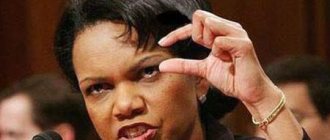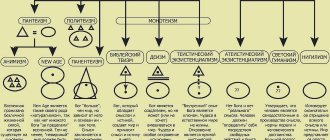Each of us has the ability to direct attention inside our being, to be aware of our thoughts, states, moods and sensations. With this ability we can see ourselves from the outside. In addition, this ability has important practical significance, because it serves as a means of complete and effective self-analysis, allowing you to evaluate your own thoughts, actions and actions, analyze them and change them. This ability is called reflection.
Definition
The word "Reflection" is of Latin origin.
Literally speaking, it means “to look back.” In psychology, reflection is called introspection or introspection. They can be called synonyms. The definition of reflection is the totality of a person’s thoughts about his life and actions, as well as subsequent assessment of himself. A person is able to evaluate himself using communication mechanisms. For this reason, the existence of such a concept as reflection is impossible without communication.
Self-observation can be different:
- Ordinary reflection
- a person thinks about his actions, notices the mistakes he has made, but does not get hung up on it. - Deep reflection
- a person engages in soul-searching, analyzes his actions and the response of society. This includes reflections on the universe and moral standards.
Any human action can become reflexive.
For example, feelings, actions, words, impulses, emotions. They become reflexive if a person turns to his consciousness and tries to carry out introspection. Thanks to reflection, a person thinks and fantasizes, goes into the world of dreams and begins to feel like a part of reality. By creating a picture of an ideal world in his head, he begins to feel like a certain person and acts in society according to his attitudes.
Empathy - what is it, or is it easy to be an empath?
Types of reflection
Ambition, reflection...
Reflection is a complex and multifaceted concept. It has many definitions, depending on the situation.
There are several main types of reflection:
- Personal character
- a person gets to know his inner world, thinks about his inner “I”. - Communicative in nature
- a person analyzes his relationships with the outside world, other people, loved ones and acquaintances. - Cooperative in nature
- a person thinks and analyzes the possibility of achieving a certain goal by acting together with someone. - Intellectual
- thinking about certain knowledge and the possibility of applying it in real life. - Existential in nature
- a person is immersed in deep and very personal reflections. - Sanogenic nature
- attempts to control a stressful situation, get rid of negative emotions, experiences and suffering.
There are also several other types of reflection, depending on the situation in which a person finds himself.
Hypocrite - who is it?
Age stages of reflection development
As previously mentioned in this article, reflection is unusual for newborns, who accept the entire world around them as the only true one.
Therefore, the first stage of reflection is referred to as 3 years. At the age of three years, a child begins to become aware of himself, analyze his behavior and the behavioral models of the people around him. Gets acquainted with the rules established in the family, and then learns to compare his behavior in relation to these rules.
The second stage is the age from 6–7 years to 10. The child gains knowledge about the world around him, not only about the one that was physically accessible to him. During this period, the child already knows how to compare his behavior with established rules and correct his own actions. And also, it is at the age of 6 to 10 years that the ability for social and communicative reflection manifests itself.
The third period is adolescence from 11 to 16 years. The teenage period is quite difficult due to hormonal changes, lack of self-acceptance, external changes and emotional instability. In this period, reflection is important for the acceptance of the new self of an already growing person, a critical analysis of one’s character, appearance, thoughts and behavior.
The fourth period covers adolescence from 16 to 20–23 years. At an already young age, reflection is characterized by the greatest objectivity, of course, when reflection is not destructive in nature and does not turn out to be excessive soul-searching.
Forms of reflection
There are several forms of introspection, depending on the situation in which a person’s thoughts begin:
- Situational form
- a person reacts to the situation that he is faced with at the moment. - Retrospective form
- analysis of events that happened in the past. - Prospective form
- a person makes plans for the future, dreams and sets certain goals.
What our time lacks is not reflection, but passion. Because our time is too tenacious to die, for dying is one of the most amazing leaps. Soren Kierkegaard. Fear and Trembling
How to develop reflection in adults
The level of reflection in adults varies from person to person. In adulthood, a person is already aware of his growth zones, is able to determine what skills he lacks and work on himself in the intended direction.
Adults, for the most part, take a conscious approach to their lives, self-improvement and problem solving. The lack of reflection can be eliminated by following some expert advice or simply listening to yourself more often and thinking about the events that are happening.
Social reflection
In social life, reflection is a kind of awareness of a person of who he is for other individuals.
In other words, social reflection in psychology is not only a person’s awareness of himself, but also an understanding of how other people treat him. This includes a person’s personality traits, reactions to various events, emotional impulses, mood and character. When joint activity arises between members of society, social reflection turns into subject-reflective relationships.
Characteristics of kinesthetics. How to communicate with kinesthetic learners?
Approaches to understanding reflection and its aspects
Traditionally (at least for Russian psychology, in particular, starting with the works of I. N. Semenov and S. Yu. Stepanov), 4 approaches to the study of reflection are distinguished (or in other words, 4 aspects of the study of reflection):
- cooperative
(Emelyanov E.N., Karpov A.V., Lepsky V.E., Lefevre V.A., Shchedrovitsky G.P., etc.). It is considered when analyzing subject-subject activities, as well as when designing collective activities, taking into account the need to coordinate the professional positions and group roles of subjects, as well as the cooperation of their joint actions. - communicative
(socio-psychological) (Andreeva G.M., Bodalev A.A., etc.). Reflection is considered as an essential component of developed communication and interpersonal perception, as a specific quality of human cognition by a person. - cognitive
or
intellectual
(Brushlinsky A.V., Kornilova T.V., Kulyutkin Yu.N., Matyushkin A.M., Semenov I.N., etc.). Understanding reflection as the subject’s ability to identify, analyze and relate his own actions to an objective situation, as well as considering reflection in connection with the study of the mechanisms of thinking, primarily theoretical. - personal (general psychological)
(Allakhverdov V.M., Vasilyuk F.E., Gutkina N.I., Znakov V.V., Leontyev D.A., Petrenko V.F., Petrovsky V.A., Semenov I. N., Stepanov S. Yu., Sharov A. S., etc.). Construction of new images of oneself, one’s “I”, as a result of communication with other people and active activity, as well as the development of new knowledge about the world.
Personal reflection
in the traditional sense, it is a psychological mechanism for changing individual consciousness.
According to A. V. Rossokhin, personal reflection
is “an active subjective process of generating meanings, based on the unique ability of the individual to recognize the unconscious (non-reflective reflection) - internal work leading to qualitative changes in value-semantic formations, the formation of new strategies and methods of internal dialogue , integration of the individual into a new, more holistic state.”
Reflection in the psychology of communication
Reflection in communication is no less important
Reflection occupies a special place in psychology because it is a form of self-knowledge. It plays a major role in communication with society, allows you to be aware of your actions and understand other people. Self-analysis allows a person to build relationships with other people.
Reflection in the psychology of communication helps to see everything that is happening from the outside. An example is the inappropriate behavior of a particular person or one’s own mistakes. Through self-analysis, a person will realize that he should not interact with a certain person or realize that he behaved incorrectly. Thus, reflection will help you eliminate unnecessary people from your life and resolve conflicts.
Reflection is the search for answers to all existing questions related to a person’s personality.
With its help, all personal problems of a person are solved. The individual is not even aware of the role reflection plays in his life. Periodically thinking about his attitude towards life and people, he conducts introspection, sees his own shortcomings and tries to correct them, depending on his moral values.
Altruist - his character, motives, advantages and disadvantages
General understanding
Reflection, in one of its most modern interpretations, can be considered as associated with the process of development of something (in particular, practice, activity, thinking, consciousness, etc.) and participating in this process by removing difficulties in its functioning.
In everyday life, as well as in some psychological contexts, reflection refers to any human reflection aimed at considering and analyzing oneself and one’s own activity (a kind of introspection), for example, one’s own states, actions and past events. Moreover, the depth of such reflection is connected, in particular, with a person’s interest in this process, the ability of his attention to notice something to a greater extent, and something to a lesser extent, which can be influenced by the degree of his education, the development of moral feelings and ideas about morality, his level of self-control and much more. It is believed that representatives of different social and professional groups differ in their use of reflection. Reflection, in one version, can be considered as a conversation, a kind of dialogue with oneself. Reflection is also usually considered in connection with a person’s ability to self-development, and with this process itself.
Some specialized models in military affairs are also built on reflection (see Tactics, Strategy, Stratagems).
What is the use of reflection?
Reflective activity opens up new possibilities for a person.
Thinking over his actions and deeds, he learns to live correctly:
- It becomes possible to control your thinking. A person tries to think in the right direction.
- Reflection promotes self-criticism, which allows you to see your own shortcomings, analyze them and work on mistakes.
- Self-analysis allows you to get rid of negative and depressing thoughts that poison human existence.
- The analysis of experienced life situations begins, with subsequent conclusions.
- Realizing past mistakes, an individual develops a strong personality and acquires his own position.
In the process of reflection, personal growth is observed.
A person changes and learns from his mistakes without repeating them in the future. But if a person lacks reflection, then he repeats similar mistakes and does not understand the cause of his distress. Philanthropist - helping for profit or a character trait?
What is reflective writing
Reflective writing - what is it? In psychotherapy, reflective writing is one of the exercises, writing practices, which is used to express one’s feelings and emotions through reflection. This writing practice can be applied to many problematic aspects of a person. For example, “a letter of anger”, “a farewell letter”, “a letter of one’s insecurities” and others.
The meaning of this reflective technique is that a person with a certain problem is given as homework a suitable topic for writing, rules and explanations for writing it.
The few rules include the structure of the letter itself - the most important thing is that the letter includes a description and analysis of an event, topic, object. Description consists of describing the fact itself, the situation when it happened, what people could have influenced the situation, and so on. Analysis consists of reflection on the process itself, cause-and-effect relationships and other issues on which it is possible to consciously analyze the object.
Experts offer some of the following tips when writing reflective writing:
- Think about why you wanted to write a letter on the chosen topic. Why is it so important to you, and what result would you like to see at the end;
- Describe the situation that worries you. Don't worry about subjectivity, reflective writing should be subjective;
- Record the emotions that arise in you as you write regarding certain points;
- What experience did you gain, did you use it in your later life;
- What conclusions did you draw after reading your letter, what emotions and sensations did what you wrote evoke in you?
What is reflection?
A certain category of people are prone to constant introspection.
But most of the population does not think about their actions. There are several ways to develop reflection and look at the world differently.
- Try to analyze your day. Analysis must be done down to the smallest detail, down to random encounters, individual dialogues, unpleasant situations and joyful events.
- Read the relevant literature.
- Take some time to reflect.
- Write down a few important issues that need to be addressed. Try to think of a possible way out.
Important:
The main way to develop reflection is communication. By contacting the outside world, experiencing positive and negative moments, a person learns self-analysis. After a long and eventful day, you should think a little about your experience and try to derive some benefit from it.
How to start reflecting
If the level of reflectivity is insufficient or the pace of life is too fast, many people think about how to begin to reflect or resume what was lost due to lack of time.
Psychologists suggest following some tips to start reflecting:
- Analyze every time you make a decision. Think about what consequences await you after taking any action, how the situation will affect you or the people around you. Try to understand and accept shortcomings in yourself, your actions, behavior, and so on.
- Conduct an analysis at the end of each, for example, working day. Remember and note what you were not satisfied with this day, what was insufficient, and try to find solutions to eliminate the identified shortcomings in the future.
- Develop your communication skills, try to understand your attitude towards other people and analyze your opinion about any particular person. Why did you have such an impression of him, are you satisfied with this and other similar questions.
- Chat with different people. Each person is individual and unlike any other. By communicating with different people, you can take a broader look at the world, get acquainted with other opinions and behavioral models.
- Use failures and problems as experience and analysis, comparison of your actions in the future to avoid mistakes. Find benefit and positivity even in your own failures and difficulties.
- Sublimate. During this process, a person frees up mental resources to think about something more than everyday problems.
With the proper desire, you can learn to reflect and know yourself
Other types of reflection
As mentioned above, there are many types of reflection.
There are three main types, depending on the direction of a person’s thinking:
- Elementary type.
Such reflection is typical for almost every person. The appearance of difficult situations in life forces us to turn to introspection and try to understand what led to the sad outcome. By reflecting on the actions taken, a person can find answers to all questions for himself. - Scientific type.
Reflection is also used in various studies and experiments. With its help, it is possible to confirm or refute certain theories from a scientific point of view. - Philosophical kind.
Philosophical reflection is devoted to high questions. We are talking about questions of existence and the universe, the true meaning of life and the purpose of man. If a person is able to think so deeply and periodically thinks about serious issues, this shows a high level of his intelligence.
Examples of reflection from life
Reflection in life, how does it manifest itself?
The modern rhythm of life does not allow us to think about important and serious issues. In fact, in the world around us there are many opportunities to develop reflection and look at life differently.
Try to think
Social networks on the Internet provide a person with so much information that there is not even time left to think about it.
People no longer have to put in effort or introspection, because all they have to do is type a query online to get an answer. For this reason, reflection is not developed in most of the population. Experts say that a large amount of various information harms a person. A large flow is not absorbed by the brain, as a result only fragmentary pictures and phrases remain, which will not be useful. The brain is designed to think about a specific topic.
Without getting out of the rhythm of life, you can develop reflection in yourself. An example from life could be a common action. It’s enough to choose one case, for example, a book you read, a movie you saw, or a trip to a museum, and then answer the following questions for yourself:
:
- Was there any benefit from this?
- Have I received new information?
- How can I use this experience?
- Did I like the character (place)?
- What did I learn from this?
This will allow you to relax and concentrate at the same time. While a person answers the questions that interest him, the brain will actively act and develop reflection.
Keep a special notebook
The tendency to introspection is developed by a special attitude towards life.
It is important to pay attention to all the details and try to even think about what could cause negative emotions. This is the only way a person can realize his mistakes. Reflection develops from an early age, but once you start thinking about all your actions, you can do this even in adulthood. A person must think about the most important and pressing issues in his life, even if they may cause him pain. There should be a lot of questions, because they cover the whole life.
After this, all this should be written down in a special notebook.
, dividing the questions into the following categories:
- Questions about life and death.
Philosophical reasoning, the meaning of life and purpose. - The main goal in life.
Did you manage to achieve it? If not, then for what reasons? - Relationships with others.
Not only well-wishers should be included, but also those with whom relations have been damaged. Answer the question “why did this happen and how could it have been avoided?” - About the spiritual world, religion and God.
- About past mistakes and actions.
Answer the question “what did I do wrong and how could I fix it?” - About plans and cherished dreams.
Answer the question “how can I achieve this”. - About material values.
Answer the question “what is most important to me in my life.”
Important:
Most of these questions can cause serious difficulties for a person, because they must answer honestly. Reflection involves introspection. A person must be able to recognize not only his positive sides, but also his shortcomings. By answering all the questions honestly and analyzing them, a person can learn a lot about himself.
Methods and techniques
The main methods for developing reflection were developed by A. V. Kapov. They are successfully used today in psychological practice. He developed a technique that includes 50 statements to which the subject must answer. After receiving the answers, the therapist performs a statistical analysis of the data according to the transcript provided by the author himself.
For each statement received, different indicators are provided for the question:
- Difficulty index. In this case, the specialist correlates the number of “correct” from the point of view of the test and “incorrect” answers.
- Correlation coefficient. It indicates the extent to which each individual question allows the chosen methodology to be applied.
- Variant distribution parameters. This indicator allows you to get the necessary idea about the sample itself, or more precisely about its statistical nature.
After this, from the list of answers, the therapist selects 27 options that best satisfy the requirements of the difficulty index and other parameters. The author provides the necessary formulas for correctly calculating data and obtaining a result that will help to understand how developed reflection is in a particular patient, as well as what type of reflection predominates in a person’s thinking.
Based on the data obtained, the psychotherapist chooses one of several methods for developing reflection.
Situational technique
The main goal of therapeutic interventions is the development of self-control and self-analysis in a person. He must correctly assess the current situation, analyze it and relate it to his actions. That is, the patient learns to coordinate his actions and behavior depending on various environmental conditions, which can change very quickly.
To develop this skill, you can use an exercise called “Self-Portrait”. In order for a person to learn to quickly analyze himself, he must understand how to evaluate other people. To do this, he will have to highlight the main features that distinguish a stranger from the general crowd
The principle of the exercise is that the patient needs to imagine that he is about to meet another person who has no idea what he looks like. To do this, you need to describe yourself in as much detail as possible. In this case, the description should affect not only appearance parameters, but also behavioral features.
For example, the patient should talk about his manner of speaking, how he folds his hands or purses his lips. The greatest effect can be achieved if the patient works with a partner who can evaluate how well the description matches what he sees. If there is no partner, then the psychotherapist himself performs his role.
During the exercise, the doctor must evaluate which of his characteristics the patient spends the longest time thinking about. After this, it is necessary to clarify with him why exactly he had difficulty describing his behavioral characteristics. What is the reason for this uncertainty?
You also need to evaluate the degree of detail of the description. The more reflection a person develops, the more detailed he describes the details of his character and personality as a whole.
Retrospective technique
Based on a similar type of reflection, which has already been discussed, it is obvious that this therapy is aimed at teaching the patient to analyze events that have already occurred. He must learn to clearly understand his motives in order to evaluate how correct they were and whether they are worth using again in the future.
To develop this type of reflection, it is recommended to perform the “Carousel” exercise. To complete it, the patient must meet new people for a week or another period determined by the doctor and maintain at least a short conversation with them.
After this, the patient should share his observations with the doctor. It is necessary for a person to analyze what mistakes he made when meeting new people, what actions were the most successful. It is required that, based on data obtained from the past, a person learns to identify a pattern of behavior and actions that will allow him to avoid awkward situations in the future.
Development of perspective reflection
This type of technique is aimed at ensuring that a person learns, against the background of the analysis performed, to make plans for the future. That is, he learns to predict the actions that he himself or other people will take. This allows you to better plan and navigate the future.
The exercise “Without a mask” is suitable for this. It lies in the fact that a person gets rid of behavioral or emotional constriction, which also becomes the reason that he simply does not risk making any plans due to excessive uncertainty in his actions and behavior.
In order for the patient to learn how to perform the analysis correctly, it is necessary to invite another participant. Each of them needs to be given cards on which some unfinished phrases are written. After this, the participants in the exercise must take turns finishing their phrases.
If at the same time the patient has problems quickly finding his way around and choosing the optimal answer, you need to work with him. At first, he should try to answer quickly, especially without thinking about the logic of the answers. Gradually he should think faster, analyze the text on the card and give more logical and appropriate answers.
There are other exercises and techniques. In addition, the therapist must conduct conversations with the patient, since at first it is not always possible to clearly determine what type of reflection deficiency he is suffering from. Very often people experience difficulties with several varieties at once, so exercises need to be selected of a combined type.
According to the majority of experienced psychologists, it is the method of developing reflection that allows patients to increase their self-esteem, develop reaction speed and the skill of conducting analysis in different life situations. This helps relieve tension and achieve harmony. After developing reflection, many patients note that they have become much more successful and suffer less often from headaches and nervous conditions.
Thus, reflection in psychology today is a method of improving a person’s personal characteristics. This is how much a person knows how to obtain the necessary life experience and analyze it. Reflexology methods allow you to understand how a person looks in the eyes of other people and allows you to correct certain shortcomings or qualities.










